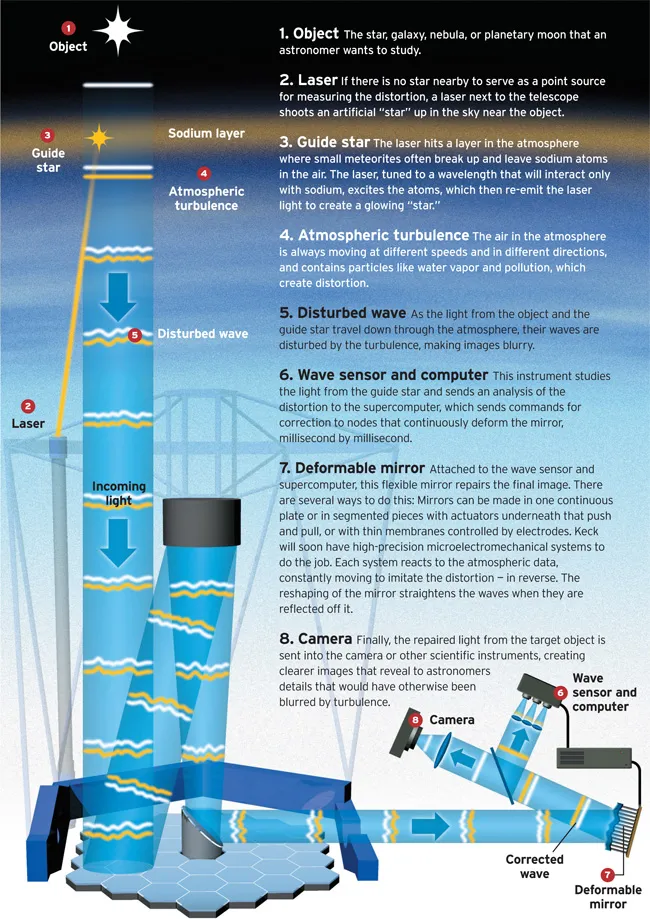Adaptive optics and lasers are giving ground-based telescopes better-than-Hubble views.
Laser guide stars.
/https://tf-cmsv2-smithsonianmag-media.s3.amazonaws.com/filer/HTW-AO-flash.jpg)
When ground-based telescopes view stars, the light they collect must weave its way through layers of air. When those layers are turbulent, the light gets blurred, so images from observatories with large mirrors turn out no better than those from your backyard telescope. Adaptive optics corrects the problem. The system—using lasers, deformable mirrors, and supercomputers—is enabling some ground telescopes to get better images than the Hubble Space Telescope.
Adaptive optics creates clearer images by compensating for atmospheric turbulence. The idea dates to the 1950s, but it wasn’t until high-powered computers were available that it could be implemented. The twin Keck telescopes in Hawaii were the first to be outfitted, in 1999 and 2000. Last October, the observatory released images of the slow volcanic eruptions on Jupiter’s moon Io—details that previously only space-based telescopes could see.
To sharpen an image with adaptive optics, the first step is to select a guide star—a point of light—and measure how the light’s wave is bent as it travels through Earth’s atmosphere. The atmosphere is complex and always changing, so a supercomputer is needed to monitor the changes. The computer then sends instructions to a deformable mirror to bend in such a way that the light’s wave straightens when it’s reflected.
Too often, there isn’t a star near an object that astronomers want to study (the disturbance of light from the guide star and the target object need to be the same in order for adaptive optics to work), so in the 1980s, astronomers began thinking about using a laser to make their own “star.” Today, laser guide stars are an essential part of any adaptive optics system. Keck installed lasers in 2004; the improved vision led to definitive evidence of a supermassive black hole in the center of the Milky Way galaxy. Currently, the observatory is upgrading to more powerful lasers, one part of a $50 million overhaul of the entire adaptive optics system.
